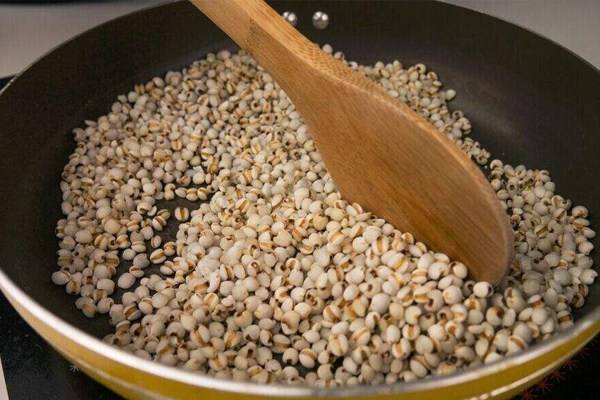After the arrival of summer, not only watermelons, sodas, ice creams, and other heat-relieving foods are selling more and more hot, but grains like coix seed, red beans, and mung beans are also becoming popular. Especially in the humid and hot southern regions, coix seed is a staple coarse grain in every household.
Usually, we believe that coix seed has the effect of diuresis, reducing swelling, and dehumidification. But do you know if these effects come from cooked coix seed or raw coix seed? And what are the effects of stir-fried coix seed?
Effects of Stir-Fried Coix Seed
The so-called stir-fried coix seed is actually heated in a small wok, stir-frying the coix seed until golden brown, retaining the coarse fiber in the coix seed and letting it release a fragrant aroma.
However, in traditional Chinese medicine, it is said that “fragrance goes to the spleen,” so stir-fried coix seed is more effective at invigorating the spleen and nourishing the stomach. Additionally, compared to raw coix seed, stir-fried coix seed has a milder nature, less coldness, and is more suitable for nourishing and invigorating the spleen.
Therefore, its effects lean more towards promoting digestion and nourishing the spleen.
Ways to Consume Cooked Coix Seed
1. Coix Seed Tea
In “Medicinal Tea Treats Numerous Illnesses,” it is mentioned that brewing coix seed, black tea, and roasted Plantago asiatica together to make tea has the effect of invigorating the spleen and stopping diarrhea. This tea is most suitable for people prone to diarrhea, poor digestion, especially those who experience diarrhea after consuming greasy foods.
If infants or young children have diarrhea, the tea can be powdered, mixed with sugar, and consumed with hot water.
2. Making Congee
Coix seed is relatively hard, making it difficult to cook thoroughly. However, after stir-frying, it becomes easier to cook and has the effects of stopping diarrhea, stimulating appetite, and relieving depression.
Effects of Raw Coix Seed
In “Compendium of Materia Medica,” raw coix seed is described as having a sweet, slightly cold nature, entering the spleen and large intestine meridians, and has the effects of dehumidification, reducing swelling, clearing heat, and promoting urination.
Coix seed’s benefits are not limited to these alone; in the Western world, it is praised as the “grain of life and health,” and even considered a cancer-preventing food.
How to Consume Raw Coix Seed?
Although referred to as raw coix seed, it is still consumed after cooking.
1. Coix Seed and Winter Melon Soup
Cook 50g of coix seed and 150g of winter melon together to make soup, seasoned lightly with salt. Drinking this in summer helps diuresis, reduces swelling, aids in weight loss, hydrates, and clears heat. It is even called a beauty and skincare soup.
2. Coix Seed and Mung Bean Soup
Cook equal parts of coix seed and mung beans together to make soup. Coix seed helps in diuresis, reducing swelling, and dehumidification, while mung beans can clear heat, reduce inflammation.
It is suitable for individuals with damp-heat constitution symptoms such as afternoon fever, yellow tongue coating, abdominal distension, nausea, bitterness in the mouth, and poor appetite. Physically, they may be prone to obesity or thinness, oily facial skin, and acne.
3. Coix Seed, Lotus Seed, and Lily Porridge
Using these three ingredients together with glutinous rice to cook porridge not only invigorates the spleen and eliminates dampness but also has beautifying and lung-nourishing effects. This porridge can be consumed for lung heat cough, skin eczema, acne on the face, loose stools, and so on.
Therefore, coix seed is an indispensable grain in summer, but the effects vary between raw and cooked, so choose according to your own situation.
If you want to learn more about health-related wellness tips, click on the above to follow us now~


